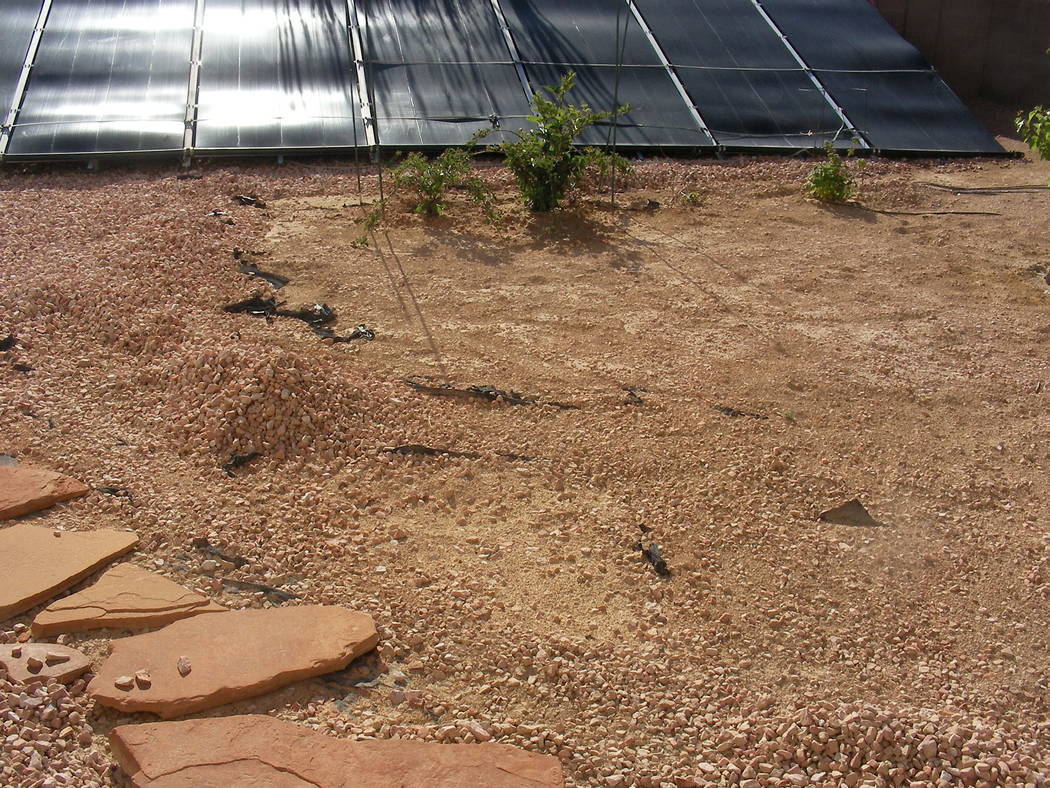While unsightly, slime flux is nonlethal tree disease

Q: I have two paloverde trees in front of my house. One seems to be fine while the other has struggled for four years. I am told the tree is healthy, but every summer it leaks white, sticky foam from the trunk. This foam attracts bees and beetles. The tree has received professional borer treatments twice a year, but it’s still bad.
A: Save your money. This is not an insect problem. It is a disease problem, but a disease that will not kill the tree. Let me explain.
You mentioned bees and beetles are attracted to this foam. I am 99 percent sure, based on the picture you sent and your description, this is a disease called slime flux, sometimes called bacterial wetwood. It is a nonlethal disease to the tree. It attacks only dead or dying wood inside the core of the tree.
Nonliving wood inside the tree cannot fight off disease microorganisms because it is dead. The only microorganisms which feed on this wood are saprophytes. Similar microorganisms feed in compost piles and convert raw waste into compost.
These microorganisms do not feed on living parts of the tree because living parts of healthy trees can fight back. Bacteria involved with slime flux create a foam with a characteristic smell of fermenting yeast or brewing beer. This yeasty smell attracts flies, bees and other insects such as beetles because this smell resembles rotting or fermenting fruit.
Normally, this disease bothers us because of these insects and its general ugliness. It does not hurt the tree. It may bother us because the foam dripping down the trunk of the tree causes discoloration of the trunk and unsightliness.
Probably this infection was transferred to this tree by unsanitary pruning practices. I always emphasize sanitizing and sharpening pruning equipment. When a tree is infected with a disease, it is extremely important to sanitize the pruning equipment before pruning a new tree. There is no cure for this problem. You and the tree must live with it.
Some arborists may drill a hole into the tree trunk and insert a metal tube just below the foam and sticks out of the trunk. This foam drains inside the tube and drips to the ground without touching the trunk. Make sure any tools and equipment that touch the inside of the tree have been sanitized thoroughly.
Q: I’ve read somewhere that you should not place black plastic under rock used for desert landscaping. I have it there. We are an older couple and cannot remove it easily. Can we do anything else?
A: Using plastic under rock mulch in desert landscapes prevents air from reaching the roots. Roots need water, but they also need to breathe. Black plastic is not permanent while rock is. Sooner or later, this black plastic will begin poking through the rock mulch as it is punctured and disintegrates.
Consider punching air holes through the plastic at the base of trees and other plants to help air reach the roots. The downside of this recommendation is it may cause the black plastic to rip and disintegrates sooner, peaking its ugly head through the rock.
Don’t think you have to remove all this plastic at once. If you see some sticking up through the rocks, remove it until more appears.
A more expensive option instead of plastic is called a weed barrier. This is spun or woven material that breathes, allowing air and water movement.
I personally don’t particularly like weed barriers because they do not prevent many of our most troubling weeds like common Bermuda grass and nutgrass. Instead, I would recommend spending a little bit more money on rock mulch and applying it thicker, perhaps 3 to 4 inches deep instead of 2 inches.
Q: I see you mention a specific iron product every year, but I decided to buy it for use early next spring. We prefer to buy it online. When I searched for it, about 80 choices appeared and now I am confused.
A: Not many places stock this iron fertilizer locally. Helena Chemical and Viragrow are the only places I know locally that carry it. When buying it online, use the keywords “iron,” “fertilizer” and “EDDHA.”
I have been waiting for an excuse to explain this iron dilemma more thoroughly. Using the wrong iron product when the chemistry of the soil or water is not right, results in a waste of time and money.
The chemistry of our desert soils is responsible for most yellowing seen in plant leaves. You are right, there is a huge variety of iron products available. Which one to use? The problem is not with the product. The problem is matching the product to our soils because of their chemistry.
There are two methods for applying iron to yellow plants: a single application to the soil in early spring or three to four applications of an iron spray directed toward yellowing leaves later in the season.
A single iron fertilizer application to the soil makes green leaves continuously as the plant grows through the year. Multiple sprays of iron to the leaves is the only method that corrects leaves already yellow. Each spray, a few days to a week apart, makes the leaves darker and darker.
All iron fertilizers work if the soil pH (which is related to its alkalinity) is 7.5 or lower. If an iron product is applied to the soil and expected to work, the soil pH must be 7.5 or lower. If an iron product is mixed with water and sprayed on the leaves, the pH of the water must be 7.5 or lower.
The magic number to remember is 7.5. Most desert soils and our water supplies are closer to 8. This becomes a problem for all iron products except one.
Iron fertilizers that contain the chelate EDDHA are 100 percent effective with any amount of alkalinity. That’s right, any amount. But the chelate in the ingredients must be EDDHA.
When applying iron fertilizer to soils in early spring, just before new growth appears, use an iron fertilizer containing the chelate EDDHA. It will tell you so in the ingredients.
Later in the growing season when leaves begin yellowing, all iron fertilizers sprayed on the leaves work if the pH of the water is below 7.5. Use distilled water or water from reverse osmosis. This water has little alkalinity and a pH of 7.
It’s difficult to get iron sprays inside the leaves. Leaves have no roots, so we must improve the movement of this iron spray inside the leaf. This is done by “making the water wetter.” Adding a liquid detergent to the spray at the very end of mixing helps the movement of the iron inside the leaf.
Q: I’m not sure if the branch at the bottom of my lemon is a sucker or a real branch. I know if it comes from below the graft to remove it, but I can’t see where it comes from exactly. The leaves from this growth are huge, too. It’s about 6 to 8 inches from the soil.
A: Look for long thorns. The rootstock used for citrus in our climate is usually sour orange, which produces an extremely sour, nonedible citrus fruit. It has huge thorns, up to 2 inches long.
If this growth does not have thorns, or if they are small, it is probably lemon. The sucker is right on the edge, but I think it is coming from the scion (lemon).
If you apply compost to the tree as it is growing, it may make some huge leaves. If you use compost as a fertilizer, apply it each year after you harvest the fruit. Water it in thoroughly.
If you applied woodchips to the soil beneath the tree, apply it in a larger area under the tree as the tree gets bigger. Apply enough so it is at least 4 inches deep. Keep woodchips 6 inches from the trunk or it can rot it.
Bob Morris is a horticulture expert and professor emeritus of the University of Nevada, Las Vegas. Visit his blog at xtremehorticulture.blogspot.com. Send questions to Extremehort@aol.com.



















